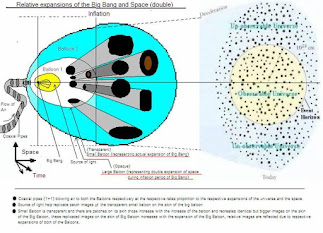The James Webb Space Telescope can see real things back in time, as if one is travelling by a time machine. But it CAN'T see time.
The light those radiated from the primitive galaxies became so slow; so that they have gone late and some of them are reaching us now - long after they were radiated.
Therefore, the James Webb Space Telescope can see them now, after so many billion years from their first radiation form those primitive galaxies.
However, this image may assist a novice person to visualise how the James Webb Space Telescope is going to see the earlier Universe, as it was soon after during the time of the Big Bang. One has to visualise the early universe as the small white balloon in the image and the present universe in sky balloon, both in common axis of time, the same galaxies are there on both of the surfaces of said balloons.